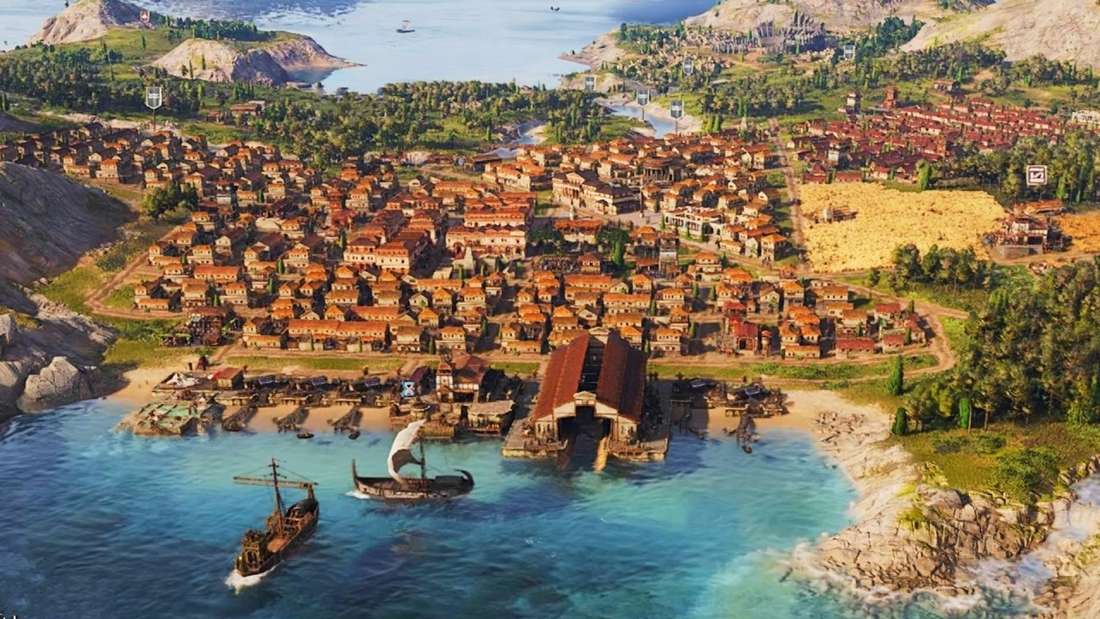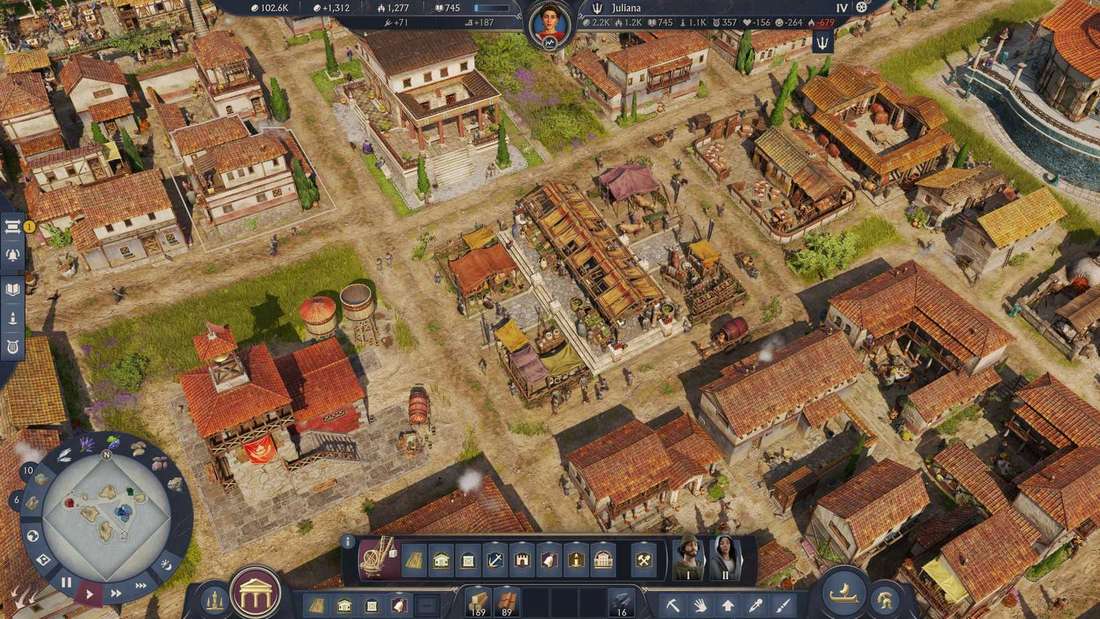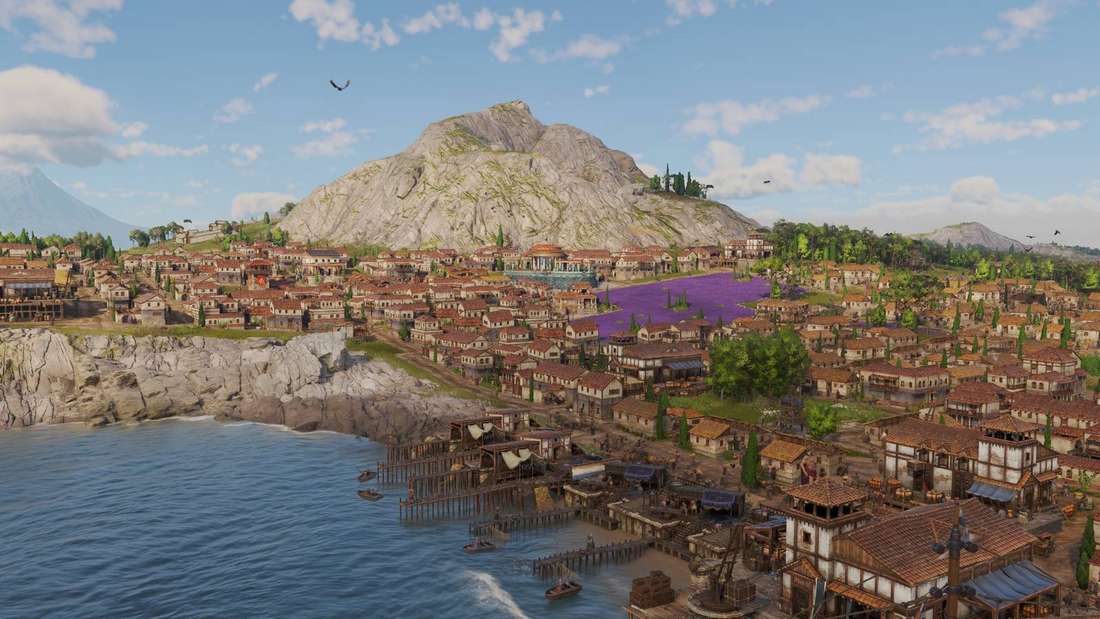ANNO 117: PAX ROMANA: THE IMPERIAL CITY-BUILDER THAT CLICKS FOR VETERANS AND NEWCOMERS
Popular Now
 Free Fire Max
Free Fire Max
 Roblox
Roblox
 The Legend of Zelda
The Legend of Zelda
 Valorant
Valorant
 Schedule I
Schedule I
 EA SPORT FC 25
EA SPORT FC 25
 Poppy Playtime
Poppy Playtime
 Minecraft
Minecraft
 Counter-Strike 2
Counter-Strike 2
 Brawl Stars
Brawl Stars 
The latest installment in Ubisoft Mainz’s acclaimed strategy series, Anno 117: Pax Romana, has successfully transported the genre back to Ancient Rome, the earliest setting in the franchise’s history. Initial reviews and deep-dive previews confirm that the game, set during the height of the Roman Empire in 117 AD, has refined the franchise’s core mechanics while introducing brilliant new features that make the entire experience feel intuitive and deeply satisfying right from the start. This approach addresses the series’ inherent complexity, broadening its appeal to the wider strategic gaming market while retaining the depth that long-term Anno fans demand.
 The Refinement of Core Economic Gameplay
The Refinement of Core Economic Gameplay
At the heart of the Anno experience is the intricate supply chain management and economic simulation, and Anno 117 makes this complex system immediately comprehensible. The fundamental loop of satisfying a growing population’s needs to unlock higher social tiers is present, but with added flexibility that smooths out the early-game hurdles, offering better player retention.
- Flexible Needs Fulfillment: Unlike previous titles that demanded specific resources, Pax Romana introduces more abstract, optional needs. For instance, low-tier residents may need “Food,” which can be satisfied by either Sardines or Porridge. This choice not only affects production chains but also grants specific bonuses (like increased happiness or income), allowing for more flexible city specialization.
- Strategic Area Effects: Buildings now exert both positive and negative influences on their surroundings. A Lavender Field boosts nearby residences, while a Pig Farm or Charcoal Burner can negatively impact the area. This system forces players to create more organic, mixed-use city layouts, moving beyond simple block-based efficiency and adding a layer of compelling real-time strategy to city planning.
- Diagonal Roads and Building Placement: A long-requested feature by the community, the introduction of diagonal roads finally allows for more aesthetically pleasing and realistic Roman urban planning. This small change has a massive impact on the visual appeal and strategic placement, making the city-building simulation feel less rigid.
The result is an early game that still offers a satisfying puzzle—the relentless balancing act between population growth, tax income, and resource output—but one that feels far more manageable and immediately rewarding.
New Features: Cultural Duality and Military Engagement
A major commercial and creative focus for Anno 117 is the introduction of dual starting provinces: the Roman heartland of Latium and the mysterious, challenging Celtic marshes of Albion. This choice is not merely cosmetic; it fundamentally alters the gameplay experience and long-term strategy, tapping into valuable high-CPC keywords around decision-making and customization in premium strategy titles.
The Albion province, in particular, showcases the game’s new depth:
- Cultural Paths and Progression: When upgrading base-level Celtic residents (Waders), players must choose whether to embrace Romanization (creating Mercators who demand Roman goods like sausages and bread) or allow them to maintain Celtic cultural traditions (creating Smiths who require cheese and beer). Managing two separate, yet interconnected, supply chains to meet all these needs represents the core challenge of the late-game economy.
- Research and Knowledge Points: A new Research Menu streamlines progression. Players generate Knowledge Points from specialists and specific buildings, allowing them to chart their own discovery tree to unlock new troops, buildings, and passive economic buffs. This system provides a clear, long-term goal that feeds directly back into the player’s preferred style of governance: focusing on economic prowess or military might.
- Reintroduced Land Combat: The return of direct Real-Time Strategy (RTS) land troop control—including training regiments of archers and swordsmen—is a major element for fulfilling the “Roman fantasy.” While players can still pursue a purely peaceful path, the ability to engage in land battles and naval combat with rival governors adds an exciting dimension of imperial expansion and defense, directly competing in the strategy game market.
 A Serious and Value-Driven Presentation
A Serious and Value-Driven Presentation
With an estimated budget exceeding $400 million (Source: Unofficial industry estimates, reflecting a major AAA development push), Anno 117: Pax Romana is presented with the high-quality polish and seriousness that its historical setting demands. The graphics are a notable improvement over Anno 1800, featuring 4K support, ray tracing, and a breathtaking day-night cycle. The game employs fully-voiced, nuanced diplomatic interactions with non-player characters (NPCs) and rival governors, elevating the narrative and political intrigue beyond simple trade menus. The commitment to a serious, value-driven historical simulation is clear, offering a mature and deeply engaging experience for consumers willing to invest in a top-tier PC and console strategy game.
Anno 117: Pax Romana is scheduled for a November 13, 2025, release, and based on the overwhelmingly positive response to the pre-release demos, it is set to dominate the winter release window for strategy game enthusiasts. It successfully balances series tradition with bold, intuitive innovations, making it a masterpiece of Roman Empire simulation and a must-buy for any fan of the city-building genre.










 The Refinement of Core Economic Gameplay
The Refinement of Core Economic Gameplay A Serious and Value-Driven Presentation
A Serious and Value-Driven Presentation